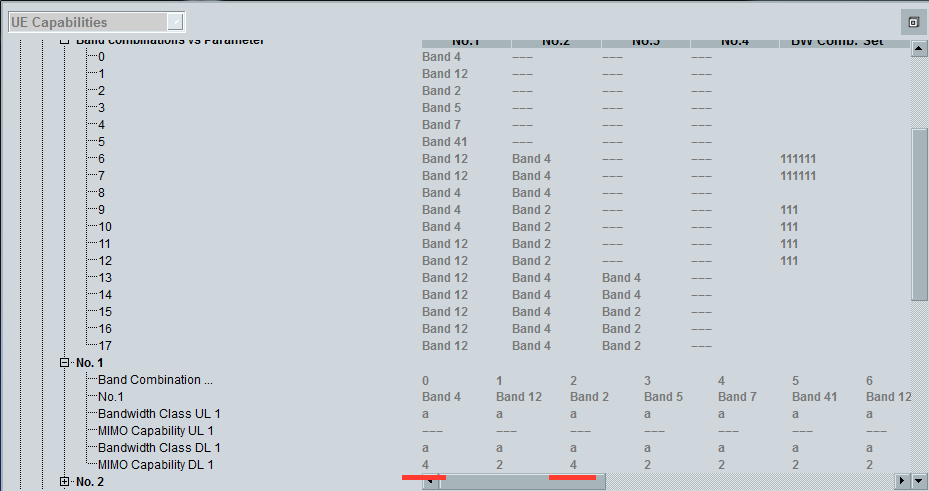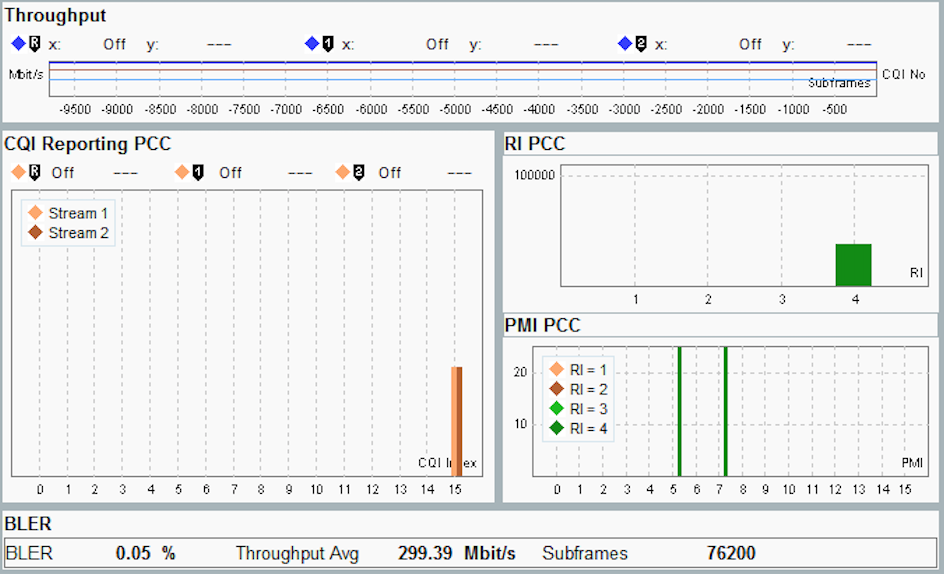Samsung Galaxy S7, the first 4×4 MIMO smartphone
Samsung’s six month old flagship, the Galaxy S7 and S7 Edge, has just become a first of it’s kind LTE smartphone. T-Mobile users recently received the September Over-The-Air (OTA) update which appeared to be a routine security patch with some enhancements to Samsung Cloud backup, but it included a hidden gem. The OTA update also included a baseband firmware (G935TUVU4APIA) update which enables 4-Way Receive Diversity, as well as the ability to process four independent spatial streams, 4×4 MIMO. This milestone carries a significant weight in the world of mobile telephony and crowns the Samsung Galaxy S7 as the first commercially available 4×4 MIMO smartphone!

Device is powered by Qualcomm’s Snapdragon 820 processor with X12 integrated modem, the only solution on the market to support Higher Order MIMO/Modulation. The OTA update provides a unique opportunity for T-Mobile subscribers, given they get the privilege to experience the first 4×4 MIMO commercial LTE network in the real world. Note that an additional network enhancement, higher order modulation (Downlink 256 QAM, Uplink 64 QAM), hasn’t been enabled on the GS7/e with this OTA update. We intend to fully test the GS7/e in the coming weeks when another OTA should drop, but we wanted to share some preliminary findings with this initial OTA update.
We are delighted to continue our collaboration with Rohde & Schwarz (R&S), a global leader in test and measurement equipment. Rohde & Schwarz has provided the CMWflexx test equipment, TS7124 RF Shielded Box equipped with Vivaldi antennas ensuring high reproducibility of OTA MIMO measurements, and their invaluable engineering support. Cellular Insights takes full responsibility for the analysis, findings, and opinions in this report.


For this quick test, we have placed a Samsung Galaxy S7 Edge (S7e) into the R&S TS7124 RF Shielded Box, took our time to find the sweet spot inside the shielded box, and radiated a single 20MHz Band 4 LTE component carrier using R&S CMW500 Radio Communication Tester. As the device attaches to the eNb it reports its capability back to the network. The Galaxy S7 Edge with the latest OTA update reveals 4×4 MIMO capability on two unique Primary Component Carriers (PCC), LTE Band 4 and Band 2. It is also important to note that the X12 modem can process up to six spatial streams when leveraging 3-way carrier aggregation and 2×2 MIMO, but only four spatial streams (one component carrier) when attached to a 4×4 MIMO capable basestation. We observed this exact tradeoff in the field when attaching to live T-Mobile’s sites that once served our S7e unit with 3-way carrier aggregation before the latest OTA update. In situations where Band 4 isn’t the PCC (Band 12) Carrier Aggregation is still used, as all component carriers will use 2×2 MIMO. But improved signal robustness and improved data rates offered by 4×4 MIMO translate to a much better end user experience, while at the same time it allows operators to use spectrum more efficiently. Radiated OTA MIMO testing methodology gives us the entire view of the modem and antenna & front end performance on any commercial device.

F
or this preliminary study, the Samsung Galaxy S7 Edge was tested under clean channel conditions, emulating a single 20MHz FDD LTE Band 4 component carrier, and incrementally stepping the RSRP value by 1dBm, from -80dBm all the way down to -130dBm. In order to maintain target BLER under 2%, the MCS and Transport Block Size Index has been dynamically adjusted.
As portrayed in the above table, we observed peak data rates of 299Mbps starting at -80dBm. The throughput remaining unchanged until -96dBm where the 16 dBm decrease in power caused the speeds to drop ever so slightly to 296Mbps. At -98dBm data rates finally dropped to 274Mbps and then between -99dBm and -102dBm throughput stayed at approximately 257Mbps.
Between -110dBm and -114dBm, where most devices typically begin to struggle, the Galaxy S7 Edge managed to achieve over 100Mbps. This is where Qualcomm’s X12 modem really gets to shine, working in sync with RF360 Front End, closed loop antenna tuner, antenna switch diversity (ASDiv), and the new diversified antenna design. Even at -120dBm, where most devices would generally fail and lose a connection, we’ve observed 63Mbps on Galaxy S7 Edge. At -130dBm, 11Mbps was achieved using QPSK scheme, and the lowest TBSI.

Designing a device with four highly efficient antennas in a small form factor is not an easy task. The main challenge is achieving high isolation between the antennas and low correlation of the received spatial streams, and with this preliminary test it is very apparent that Samsung has done a remarkable job. It becomes even more impressive if we remember that the Galaxy S7 and S7 Edge global launch happened in March, and over the past six months we haven’t seen a single 4×4 MIMO smartphone from any other OEM other than Sony (XZ Japanese variant). We will follow up with a full performance study on the Samsung Galaxy S7 Edge using multiple fading profiles, frequency bands, and 3-way carrier aggregation, but this preliminary test suggests that we potentially have the best performing LTE smartphone on the market.
Stay tuned: “Tale of a phone with two personalities…”

09jeald • 9 years ago
Hi Milan, great stuff as always :) Would you be able to get a S7 without the 4x4 update so you could do a direct comparison between the impact of 4x4 on the same model? Also doesn't the exynos 8890 contain a modem capable of 256/64QAM?
Milan M.P. • 9 years ago
We will do a direct comparison in our full review. To our best knowledge Exynos 8890 is only capable of Cat 9, so no Higher Order MIMO/Modulation. Thanks!
A • 9 years ago
Hi Milan, are you sure about the exynos? Some websites say yes, some say no
David • 9 years ago
I live in NYC with many skyscrapers and high population density using Verizon network. I am eagerly looking forward to your review of the iPhone 7(+) with the Qualcomm MDM 9645 / WTR 4905 / WTR 3925. I have heard that the iPhones don't have the antenna support of the S7 to have 4x4 MIMO / 256 QAM. Is this true? If so, then unlike S7, the iPhone 7(+) can never be upgraded to 4x4 MIMO / 256 QAM.
Milan M.P. • 9 years ago
David, We are in the process of testing, but generally speaking, for 4x4 MIMO four receive antennas need to be present in the device. On the other hand, 256 QAM can be achieved with OTA update to Qualcomm 82x powered devices, regardless of the amount of Rx antennas. Hope this helps
David • 9 years ago
Milan, thank you for the detailed write-ups. I see you're based in lower Manhattan. So it is true, Apple did not put in the 4 antennas? What does 256 QAM do for the device without the 4x4 MIMO? Won't the noise be a problem in this case? Also, is there a way to read about background material? In my case my BS is in EE with some CS. Also, I *do* wish Verizon and Apple would (better) coordinate so that Apple at least delivers a handset that has the same capability of the 6 month old Samsung. It makes for better customer experience for those of us in dense places like Manhattan with all of the tall buildings and all of the people. Thanks again for your hard work!
Pei • 9 years ago
have you acheived NSG advanced mode in s7e? if you have, let me know...
Stan • 9 years ago
How exactly did you test 4x4 MIMO when the CWMflexx dual CMW500 + CMWC setup does not yet support 4x4 MIMO????
Allan • 9 years ago
Hi, on Nov 5th 2016 T-Mobile released a new SW G930TUVU4APK1 for Galaxy S7. Are you guys gonna test if it supports 4x4 MIMO and DL-256QAM/UL-64QAM? Thanks!
Raymond • 8 years ago
When we will see exynos s7 in action in terms of LTE performance?
Milan M.P. • 8 years ago
We are still trying to get ahold of an Exynos unit, which is not being sold in the U.S. Once we get it, we'll run a comparison test.
Raymond • 8 years ago
thanks! looking forward to see that! ^_^ nice in depth review by the way
Gabriele • 8 years ago
Hi, I often read on this site there are novelties on the comparison between samsung s7 qualcomm / Exynos? I'm Italian and I would be very curious about the differences in reception and lte. thank you so much
Cor • 8 years ago
Are there other bands in the S7 using 4x4 MIMO or is band 4 the only band which uses the 4x4 MIMO?